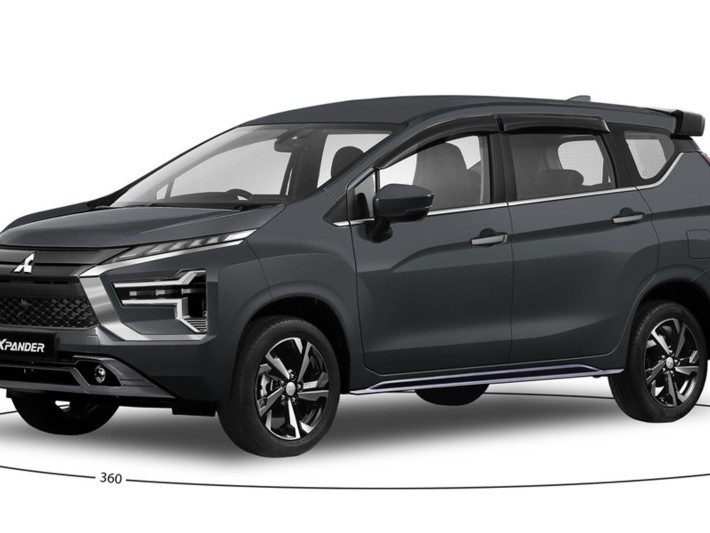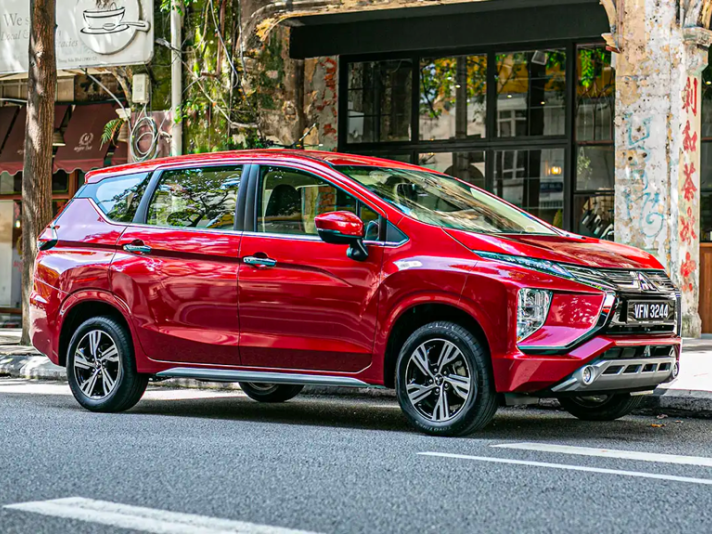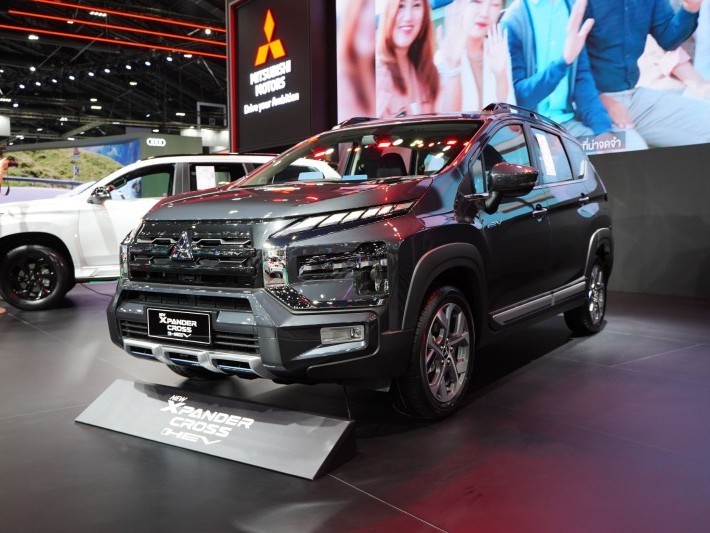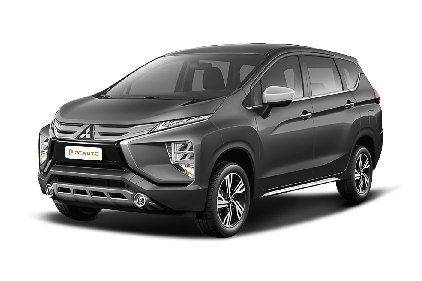Q
mitsubishi xpander malaysia price
The Ora Good Cat is an all - electric model under Great Wall Motors, officially brought into the Malaysian market by GWM Malaysia. Current prices range from roughly RM130,000 to RM150,000 depending on the configuration, with actual pricing possibly fluctuating due to promotional activities or optional extras. Positioned as a stylish compact EV, it primarily targets young consumers and offers two battery capacity options (48kWh and 63kWh), providing NEDC ranges of 400km and 500km respectively. It supports DC fast charging, capable of charging the battery to 80% in 30 minutes. Malaysian consumers can benefit from the government's tax incentives for electric vehicles, including exemptions from import duty and sales tax, making the actual on - the - road price more competitive. The vehicle comes equipped with Level 2 driving assistance systems, a panoramic sunroof, and wireless phone charging. Its unique bionic design language and extensive color options give it high recognition in the local market. For Malaysian users considering an electric vehicle, it's advisable to also check the local charging network coverage. Major cities are gradually improving their charging infrastructure, and GWM Malaysia offers an 8 - year or 180,000km battery warranty, which effectively helps alleviate range anxiety. In the same price bracket, models like the BYD Dolphin can be considered for comparison. It's recommended to visit showrooms for a test drive to experience differences in handling performance and smart features firsthand.
Special Disclaimer: This content is published by users and does not represent the views or position of PCauto.
Related Q&A
Q
What engine is in the Mitsubishi Xpander 2023?
The 2023 Mitsubishi Xpander is powered by a 1.5-liter MIVEC four-cylinder naturally aspirated gasoline engine, delivering a maximum output of 105 horsepower and a peak torque of 141 Nm. It comes paired with either a 5-speed manual or a 4-speed automatic transmission. This engine prioritizes fuel efficiency and smoothness, making it ideal for daily family use. As a 7-seater MPV, the Xpander's engine is tuned to emphasize low-end torque, suiting city driving and load-carrying needs. It also features Mitsubishi's MIVEC variable valve timing technology, which optimizes power response and fuel consumption. Among its peers, many competitors like the Toyota Avanza or Honda BR-V also use naturally aspirated engines of similar displacement, but their tuning and technical focuses vary. The Xpander stands out for its high reliability and relatively low maintenance costs, appealing to practicality-minded consumers. For those seeking more power, Mitsubishi offers other models with turbocharging technology, but the Xpander is positioned more towards economy and practicality, targeting family users.
Q
How much is the new Xpander 2023?
The official price of the all-new 2023 Mitsubishi Xpander ranges from RM99,980 to RM111,980, depending on the variant, including the standard Xpander, the high-spec Xpander, and the Xpander Cross. All models are powered by a 1.5L MIVEC naturally aspirated engine paired with a 4-speed automatic transmission, delivering a smooth driving experience. The Xpander is known for its spacious 7-seater cabin and flexible interior layout, making it ideal for families. The addition of the new ADAS advanced driver assistance system further enhances driving safety. This MPV stands out for its value-for-money proposition in its class, especially appealing to consumers who prioritize practicality and comfort. When purchasing, you can also check out the promotional offers from different dealers, such as free maintenance services or low-interest loans. If you're interested in the Xpander, it's advisable to visit a nearby showroom for a test drive to experience its handling and space firsthand. You might also want to compare it with other models in the same category, like the Toyota Avanza or Honda BR-V, to make a more comprehensive buying decision.
Q
What is the ground clearance of the Xpander 2020?
The 2020 Mitsubishi Xpander has a ground clearance of 205mm, a design that makes it perform exceptionally well on Malaysia's diverse road conditions, handling both city driving and occasional country roads with ease. The higher ground clearance not only improves the vehicle's off-road capability but also effectively prevents the undercarriage from scraping on rough roads, making it particularly suitable for water accumulation section that may appear during Malaysia's rainy season. Ground clearance is one of the key indicators for measuring the practicality of SUVs and MPVs; models typically ranging between 180mm and 220mm can balance comfort and off-road performance. As a 7-seater MPV, the Xpander maintains a spacious interior while also focusing on optimizing the chassis height, giving it a competitive edge among models in its class. For Malaysian consumers, choosing a model with appropriate ground clearance is especially important, as it directly relates to the convenience and safety of daily driving, especially when dealing with areas with poor road conditions.
Q
What is the fuel consumption of the Mitsubishi Xpander Cross 2020?
According to official figures, the 2020 Mitsubishi Xpander Cross has a combined fuel consumption of approximately 6.5 to 6.9 liters per 100 kilometers, though the actual numbers can vary depending on driving habits, road conditions, and vehicle load. It’s powered by a 1.5-liter MIVEC naturally aspirated engine paired with a 4-speed automatic transmission, delivering smooth power and decent fuel efficiency—perfect for Malaysian family daily use. For owners looking to cut fuel costs further, regular vehicle maintenance, keeping tire pressure at the recommended level, and avoiding aggressive driving like sudden acceleration or hard braking can all help boost fuel efficiency. Plus, as a crossover MPV, the Xpander Cross doesn’t just shine in fuel economy; it also offers generous interior space and a higher ground clearance, making it ideal for Malaysia’s varied road conditions. Whether you’re commuting in the city or heading out for a weekend getaway, it handles it all with ease.
Q
How many seats are in the Mitsubishi Xpander 2020?
The 2020 Mitsubishi Xpander is a popular 7-seater MPV in the Malaysian market, featuring a 2+3+2 seating layout that can accommodate 7 passengers. The second-row seats fold down in a 60:40 split, while the third-row seats fold 50:50, offering flexible space configurations to meet different cargo needs. Under the hood, it's powered by a 1.5-liter MIVEC naturally aspirated engine, delivering 105 horsepower and 141 Nm of peak torque, paired with a 4-speed automatic transmission. It focuses on practicality and fuel efficiency, making it a great fit for family users. The Xpander also comes with basic features like a multifunction steering wheel and a touchscreen infotainment system. Its higher ground clearance (205mm) helps tackle some of Malaysia's rougher road conditions. Notably, the Xpander positions itself between compact MPVs and mid-size SUVs in the Southeast Asian market, competing with models like the Toyota Avanza and Honda BR-V. However, its unique exterior design and Mitsubishi's reputation for durability make it a top choice for many consumers.
Q
What size engine is in the Mitsubishi Xpander 2020?
The 2020 Mitsubishi Xpander is powered by a 1.5-liter MIVEC naturally aspirated petrol engine, model 4A91. This four-cylinder unit churns out 105 horsepower (77 kilowatts) and a peak torque of 141 Nm, paired with either a 5-speed manual or 4-speed automatic transmission. Its performance is ideal for daily family use, striking a good balance between fuel efficiency and reliability. This engine is widely used across multiple Mitsubishi models, boasting mature technology and low maintenance costs, making it well-suited for Malaysia's road conditions and climate. As a 7-seater MPV, the Xpander's engine is tuned to deliver strong low-end torque, perfect for city driving and carrying loads, aligning with the Southeast Asian market's preference for durability and practicality. It's worth noting that while naturally aspirated engines aren't as powerful as turbocharged ones, their simpler structure, easier maintenance, and lower long-term running costs are part of why the Xpander remains popular in Malaysia.
Q
Is Xpander 2024 3 cylinder?
Based on the current information, the 2024 Mitsubishi Xpander available in the Malaysian market is equipped with a 1.5 - liter MIVEC four - cylinder naturally aspirated engine, not a three - cylinder configuration. This engine delivers 105 horsepower and 141 Nm of torque, paired with either a 5 - speed manual or a 4 - speed automatic transmission. It focuses on providing smoothness and fuel efficiency for the family car market.
The doubts about a three - cylinder engine might stem from the fact that some brands have adopted three - cylinder technology in recent years for emission reduction purposes. However, the Xpander maintains a four - cylinder layout to ensure power stability. It's worth noting that although three - cylinder engines are smaller in size and more fuel - efficient, they usually require more advanced technical tuning for vibration suppression and high - speed performance. In contrast, the four - cylinder structure still has advantages in terms of durability and smoothness.
Malaysian consumers can make their choices according to their own needs when purchasing. If they prioritize low fuel consumption and are open to new technologies, they can look into three - cylinder models from other brands. If they prefer a more mature powertrain, the four - cylinder configuration of the Xpander remains a reliable option. It is recommended to take test drives to experience the differences.
Q
What is the ground clearance of the Xpander 2024?
The 2024 Mitsubishi Xpander has a ground clearance of 205 millimeters. This figure is relatively high among compact MPVs and allows the vehicle to adapt well to Malaysia's diverse road conditions, including urban roads and the rough terrains in the suburbs. The high ground clearance not only improves the vehicle's passability but also reduces the risk of chassis scratches, especially on flooded roads that may occur during the rainy season in Malaysia.
In addition to the ground clearance, the 2024 Xpander is also equipped with an optimized suspension system, which further enhances driving stability and comfort. For Malaysian consumers, this type of high - chassis MPV is very practical. It can meet the needs of family outings and handle complex road conditions.
If you often need to carry passengers or cargo and also pay attention to the vehicle's passability, the 2024 Xpander would be a great choice. Its space performance and practicality are also worth noting.
Q
Is the 2024 Mitsubishi Xpander a MPV or SUV?
The 2024 Mitsubishi Xpander falls into the MPV (Multi-Purpose Vehicle) category rather than the SUV (Sport Utility Vehicle) category. Its original design aim was to meet the needs of family users for spacious interiors and comfortable riding experiences. It features a three - row seat layout and sliding side doors, which are typical characteristics of MPVs. The Xpander has a relatively high ground clearance and crossover - style exterior kits, making it look somewhat like an SUV. However, in essence, it remains an MPV focused on practicality and versatility.
For consumers in Malaysia, the Xpander is an excellent family vehicle. It offers good comfort and convenience, whether for city driving or long - distance trips. The main differences between MPVs and SUVs lie in their body structures and uses. MPVs prioritize passenger space and cargo - loading flexibility, while SUVs emphasize off - road performance and driving visibility. Consumers can choose the appropriate model based on their actual needs.
The Xpander has always been very popular in the Malaysian market because it combines practicality, economy, and reliability, making it a great fit for local road conditions and family - use scenarios.
Q
What is the fuel consumption of the 2024 Mitsubishi Xpander?
The 2024 Mitsubishi Xpander offers a moderate fuel economy. According to official data, its combined fuel consumption is approximately 6.5 to 7.2 liters per 100 kilometers. The exact figure may vary slightly depending on driving habits, road conditions, and vehicle configurations (such as the 2WD or 4WD versions). This model is equipped with a 1.5-liter MIVEC naturally aspirated engine, paired with a 4-speed automatic or 5-speed manual transmission. The power is tuned to meet the practical needs of families.
For Malaysian users, the Xpander's fuel consumption is suitable for daily city commuting and medium - to short - distance trips, especially considering the common traffic congestion in the local area. It is recommended to perform regular maintenance (such as replacing the air filter and spark plugs) to optimize fuel efficiency. In addition, if you want to further reduce fuel consumption, you can try some fuel - saving driving techniques like smooth acceleration and reducing idling time.
Similar models in the same class, such as the Toyota Avanza or Honda BR - V, have a comparable fuel economy. However, the Xpander has an edge in terms of space flexibility and cost - effectiveness, making it a great choice for family users who value practicality.
Popular Cars
Model Year
Car Compare
Car Photo
Latest Q&A
Q
How much did a new 2018 beetle cost?
The 2018 Volkswagen Beetle had a starting price range of approximately RM120,000 to RM180,000, depending on the trim and options. The entry-level 1.2 TSI Design model was the most affordable, while the top-spec 2.0 TSI R-Line version approached RM180,000—though final pricing could vary with optional extras and dealer promotions.
As a timeless classic, the 2018 Beetle kept its retro charm but packed modern tech like a touchscreen infotainment system and active safety features. Under the hood, buyers could choose between the fuel-efficient 1.2T or the more spirited 2.0T engine.
Fair warning: Volkswagen discontinued the Beetle in 2019, so you’ll only find it on the used market now. That said, its iconic design and nostalgic appeal still make it a hit among collectors. If you’re eyeing a pre-owned model, always check the vehicle history and maintenance records to snag a solid deal.
Q
What engine does a 2018 VW Beetle have?
The 2018 Volkswagen Beetle offered two gasoline engine options across different markets. The primary powerplant was a 1.2-liter TSI turbocharged inline-four, delivering 105 horsepower and 175 Nm of torque, paired with a 7-speed DSG dual-clutch transmission. This compact forced-induction engine struck a balance between urban fuel efficiency and strong low-end torque.
Higher-spec variants featured an optional 1.4-liter TSI turbocharged unit, bumping output to 150 horsepower. Both engines adopted direct fuel injection and belonged to VW’s widely used EA211 modular family, featuring modern tech like lightweight aluminum blocks.
Though retaining its iconic silhouette, this generation Beetle actually shared its underpinnings with the Golf, inheriting the brand’s proven front-wheel-drive architecture. This platform commonality also translated to easier maintenance, as local dealerships were well-versed in servicing these powertrains thanks to extensive parts sharing across VW’s lineup.
Q
What are the different models of the 2018 VW Beetle?
The 2018 Volkswagen Beetle comes in three main trims: Classic, Trendline, and Sport. All models are powered by a 1.2-liter TSI turbocharged engine delivering 105 horsepower, paired with a 7-speed DSG dual-clutch transmission—perfect for city driving with its nimble handling and solid fuel efficiency.
The entry-level Classic trim rolls on 16-inch wheels and features a basic multimedia system. Stepping up to the Trendline adds 17-inch wheels, fog lights, and chrome accents. The Sport trim leans into its name with 18-inch wheels, a sport-tuned suspension, and unique interior color options.
This generation keeps the Beetle’s iconic retro curves but modernizes them with touches like LED daytime running lights. Inside, you’ll find color-matched dash panels, and with 310 liters of trunk space, it’s more practical than most small cars in its class.
Since the Beetline was discontinued in 2019, the 2018 model stands as the last new generation, making it a rising collector’s item—especially the convertible, which holds strong appeal in the used market. For maintenance, stick to routine service every 15,000 km or 12 months, and regular 95-octane fuel is all it needs.
Q
Does the 2018 Beetle have Apple CarPlay?
The 2018 Volkswagen Beetle did come equipped with Apple CarPlay, integrated into its Composition Media infotainment system. This allowed iPhone users to seamlessly connect for navigation, music, and other apps. The system also supported Android Auto, catering to different smartphone users with its intuitive and responsive interface—definitely a plus for convenience on the road.
That said, some early-production 2018 models might require a software update to activate the feature, so it’s worth checking with an official dealer to confirm your car’s specs or available upgrades. Also, wireless Apple CarPlay wasn’t standard across all trims; it depended on the factory-installed options.
For fans of classic styling who still want modern tech, the Beetle struck a nice balance between retro charm and everyday usability. Competitors like the Mini Cooper offered similar connectivity, but let’s be honest—the Beetle’s iconic design was always its standout feature.
Q
What is the fuel economy of the 2018 Beetle?
The 2018 Volkswagen Beetle's fuel efficiency varies by powertrain. The 1.2L TSI turbocharged version delivers a combined fuel consumption of around 5.5L/100km, while the 1.4L TSI model is slightly thirstier at approximately 6.0L/100km – both perform best with 95-octane petrol.
You'll likely see higher consumption in city driving, but it cruises efficiently on highways thanks to its classic aerodynamic design. For better mileage, stick to routine maintenance like cleaning the air filter and keeping tyres properly inflated. These small habits can help squeeze out extra kilometres per litre.
Though discontinued, the 2018 Beetle remains popular in the used car market – its iconic styling and decent fuel economy make it a practical daily driver. Just remember real-world figures depend heavily on driving style and road conditions, so check owner forums for real-life feedback.
View MoreRelated News

Mitsubishi Xpander On-Road Price: The Complete Pre-Purchase Guide
JamesApr 9, 2025

Mitsubishi Xpander Redesign: 4AT+1.5L Power Dated, Only 2 Safety Airbags!
JohnSep 24, 2024

Mitsubishi Xpander: Priced at RM 100,980, a perfect combination of comfort, spaciousness and fashion
LienMay 30, 2024

Bangkok Motor Show: MITSUBISHI XPANDER CROSS priced at 946,000 Thai Baht
Kevin WongMar 26, 2024

Mitsubishi brings Xpander and Xpander Cross HEV models to 2024 Bangkok International Motor Show
AshleyMar 18, 2024
View More

















Pros
Cons